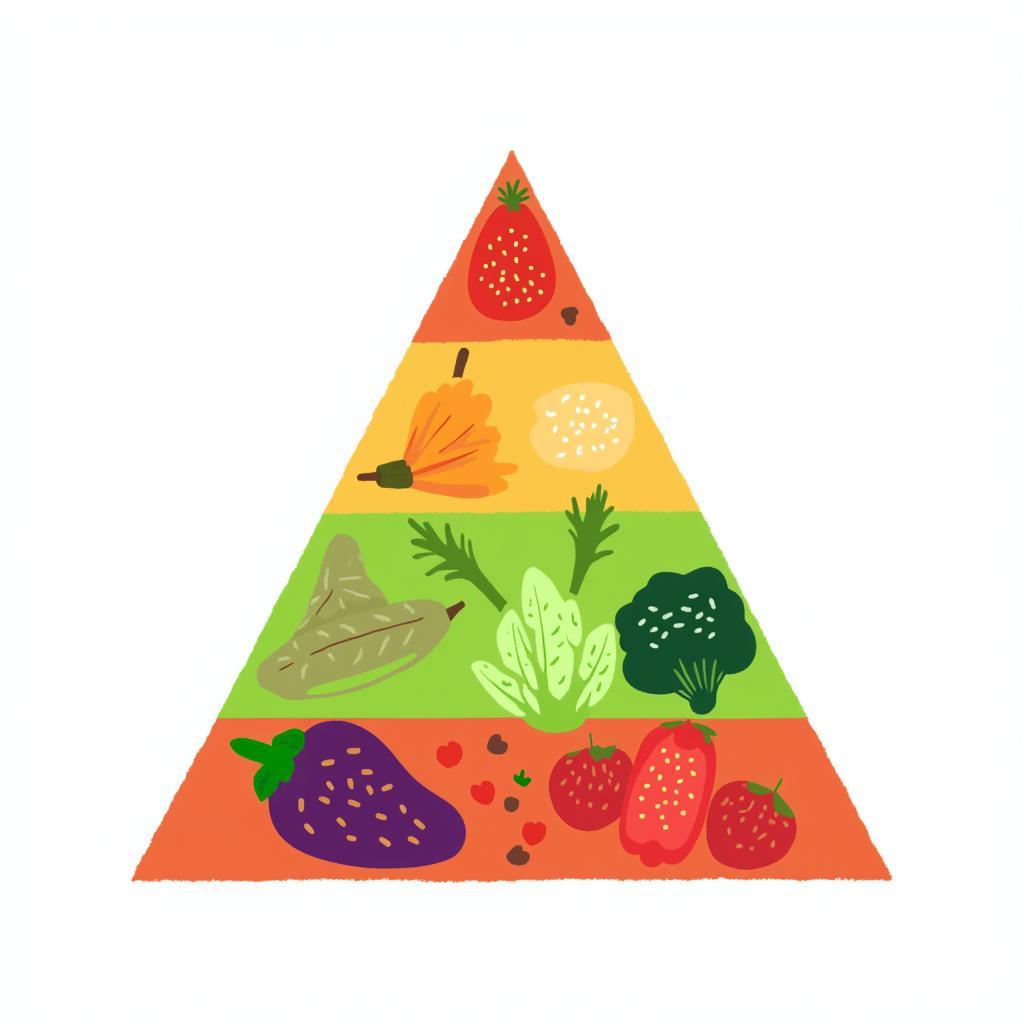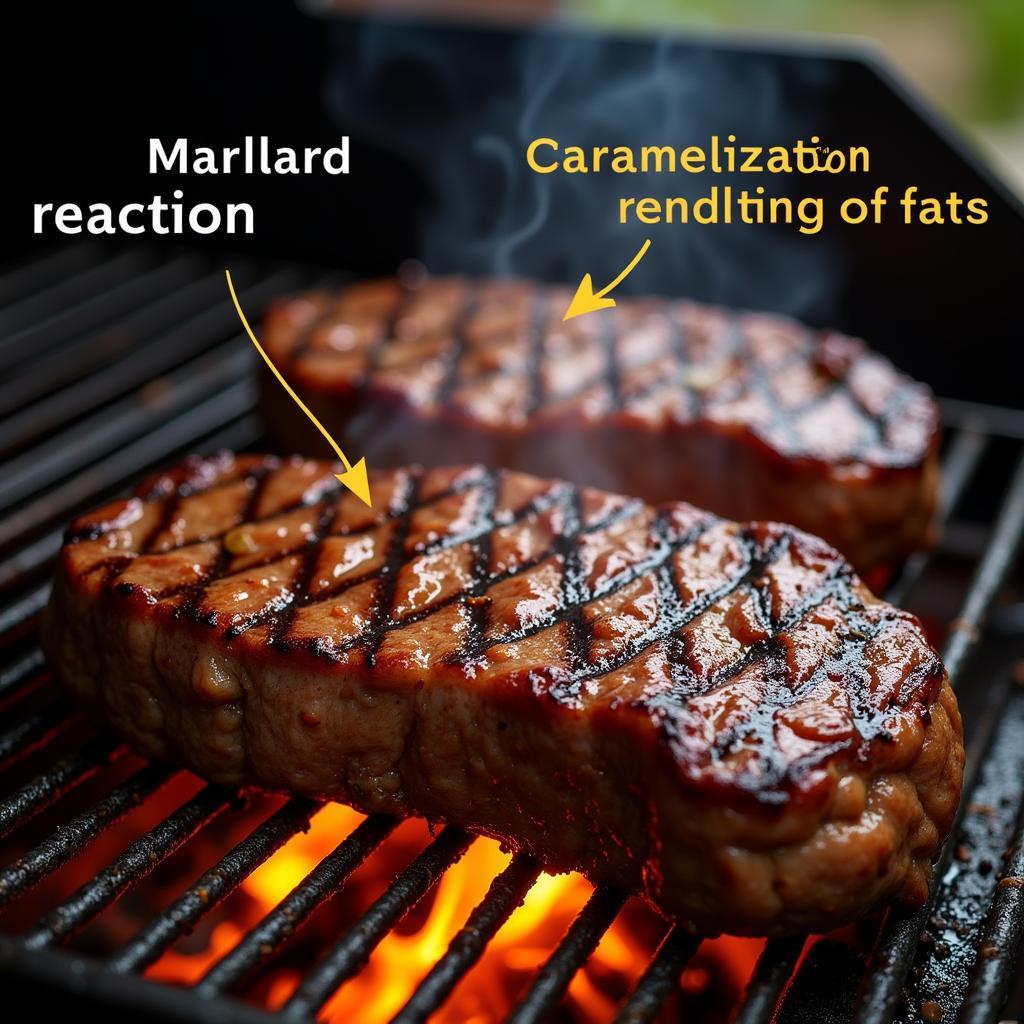Food, the foundation of our sustenance and a source of immense pleasure, often remains a mystery we consume without a second thought. But have you ever stopped to consider the intricate makeup of what you eat? Delving into the “Anatomy Of Food” reveals a fascinating world of structure, composition, and the magic that transforms raw ingredients into culinary delights.
Let’s embark on a journey to dissect, analyze, and appreciate the building blocks of our meals, unraveling the science and art behind every bite.
Deconstructing the Delicious: Core Components of Food
Just as the human body comprises different systems, food too has its own fundamental elements. These primary components not only provide us with energy but also contribute to our growth, development, and overall well-being. Let’s break down these key players:
-
Macronutrients: These are the heavy lifters of the nutrition world, providing our bodies with the calories and energy needed for everyday activities. This category encompasses:
- Carbohydrates: The primary energy source for our bodies, found abundantly in grains, fruits, and vegetables.
- Proteins: The building blocks of our cells and tissues, essential for growth and repair. Think lean meats, beans, and lentils.
- Fats: Often demonized, fats are crucial for hormone production, cell function, and insulation. Healthy fats can be found in avocados, nuts, and olive oil.
-
Micronutrients: Though needed in smaller quantities, these vitamins and minerals play equally important roles in various bodily functions, from boosting immunity to supporting healthy bones.
- Vitamins: Organic compounds essential for processes like vision, blood clotting, and metabolism.
- Minerals: Inorganic substances that regulate fluid balance, muscle contractions, and nerve function.
-
Water: Often overlooked, water is the lifeblood of our food and our bodies. It’s vital for digestion, nutrient absorption, and temperature regulation.
 Food Pyramid: Macronutrients
Food Pyramid: Macronutrients
Beyond the Plate: Exploring the Architecture of Food
Understanding the anatomy of food goes beyond identifying its core components. It’s about recognizing how these elements interact, their physical structure, and how they transform during cooking.
- Cellular Structure: Every ingredient, from a juicy strawberry to a lean steak, is composed of cells. These microscopic units influence texture, taste, and how the food breaks down during digestion.
- Chemical Composition: The unique blend of carbohydrates, proteins, fats, vitamins, and minerals within each food determines its nutritional value and how our bodies utilize it.
- Physical Properties: Characteristics like shape, size, and water content affect how food cooks and its overall sensory appeal.
 Cooking Steak: Chemical Reactions
Cooking Steak: Chemical Reactions
For example, consider the difference between a raw carrot and a cooked one. Raw carrots, with their rigid cell walls, offer a satisfying crunch. Cooking, however, softens these walls, making the carrot tender and releasing its natural sweetness.
Why is Understanding the Anatomy of Food Important?
You might be wondering, “Why should I care about the inner workings of my food?” Here’s why:
- Informed Food Choices: Understanding the composition of food empowers you to make healthier choices tailored to your dietary needs and goals.
- Enhanced Culinary Skills: Knowing how different components react to heat, moisture, and other ingredients allows you to become a more intuitive and creative cook. Imagine transforming a simple airline food tray into something delicious with this knowledge!
- Deeper Appreciation for Food: Recognizing the complexity and artistry within each ingredient fosters a deeper respect for the food we consume and the hands that prepared it.
 Healthy Meal Prep: Balanced Diet
Healthy Meal Prep: Balanced Diet
Putting Knowledge into Practice: Food for Thought
Next time you sit down for a meal, take a moment to appreciate the intricate anatomy of your food. Consider:
- What are the primary macronutrients in this dish?
- How might the cooking method have altered its texture and flavor?
- What are the potential health benefits of the different ingredients?
By engaging with our food on a deeper level, we unlock a world of culinary possibilities and cultivate a more mindful and appreciative approach to eating.
Conclusion
Unveiling the anatomy of food transforms our perception from simply satisfying hunger to appreciating the symphony of nutrients, textures, and flavors that nourish our bodies. This journey of culinary exploration empowers us to make informed choices, enhance our cooking prowess, and ultimately, foster a deeper connection with the food we consume.
Remember, the next time you pick up a fork, you’re not just about to enjoy a meal—you’re about to experience the intricate and fascinating world of the anatomy of food.